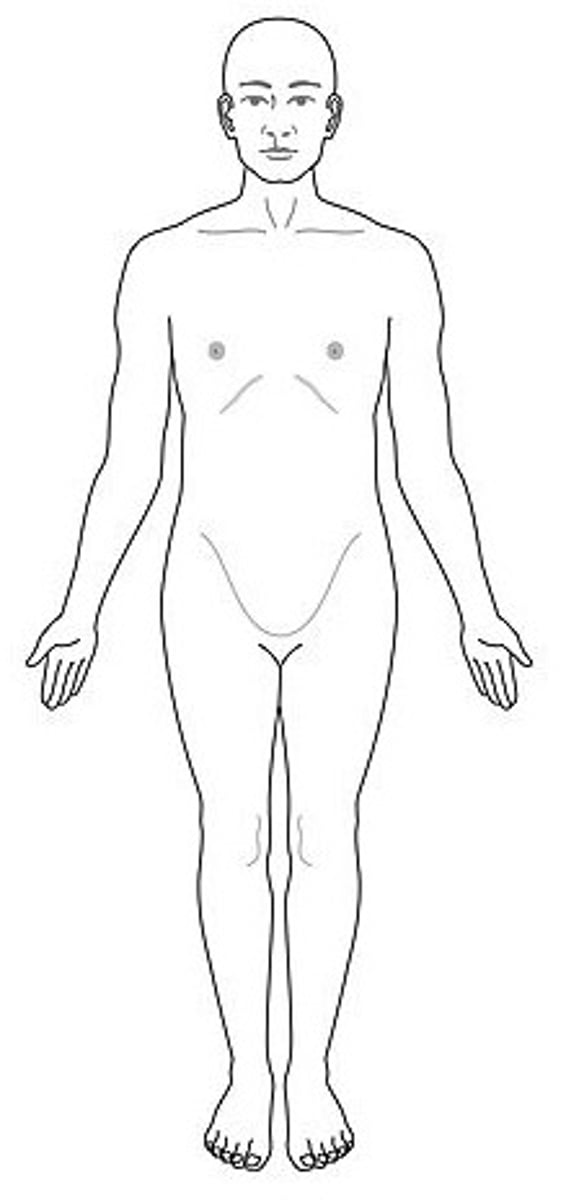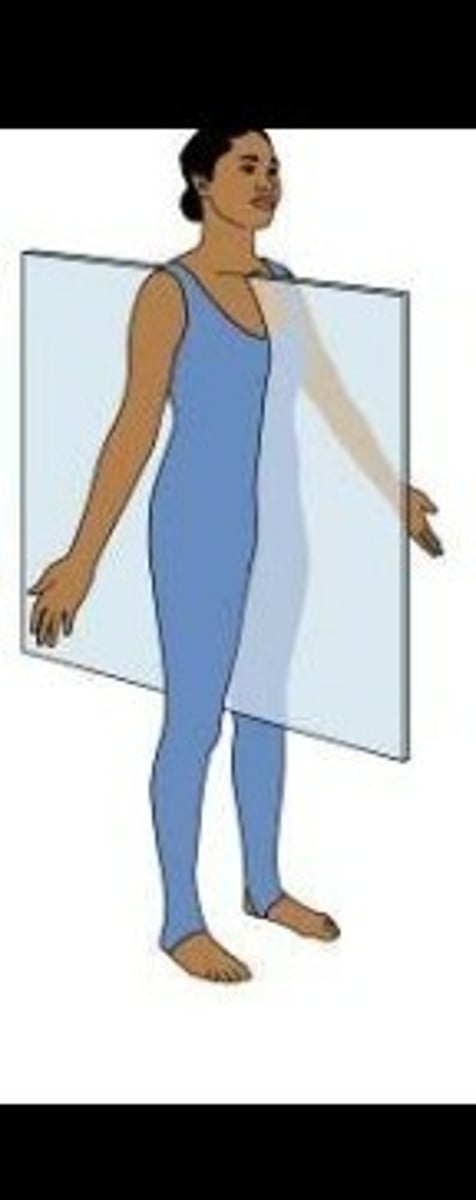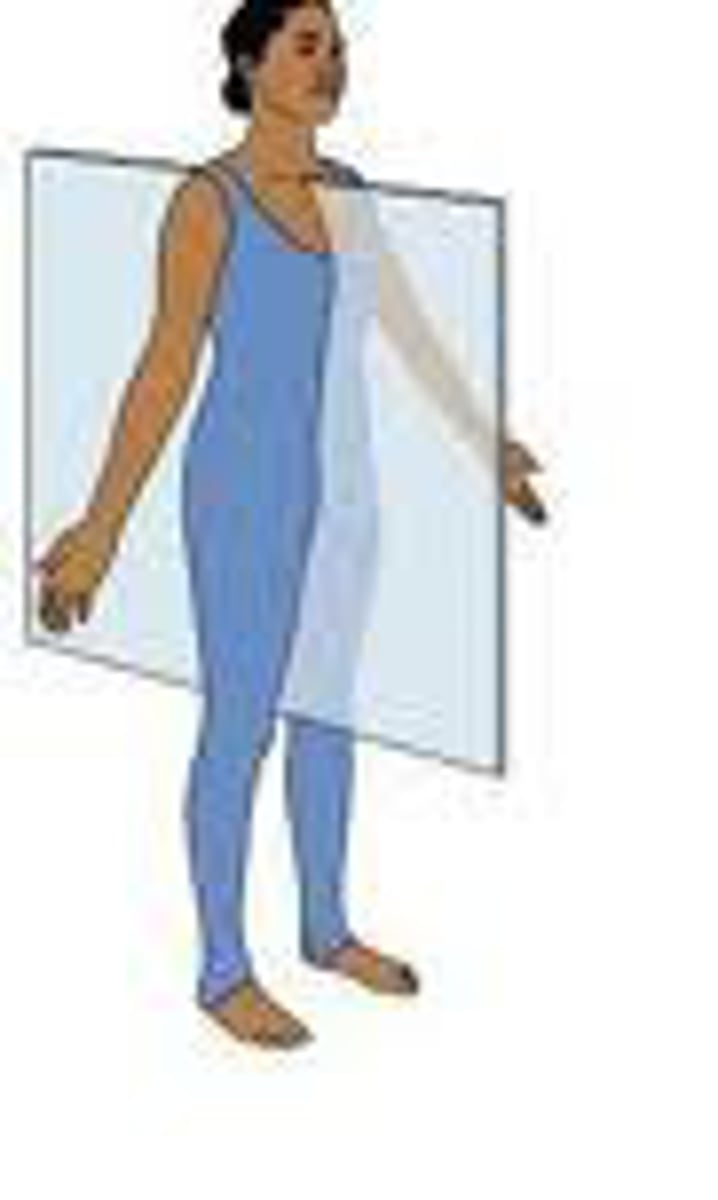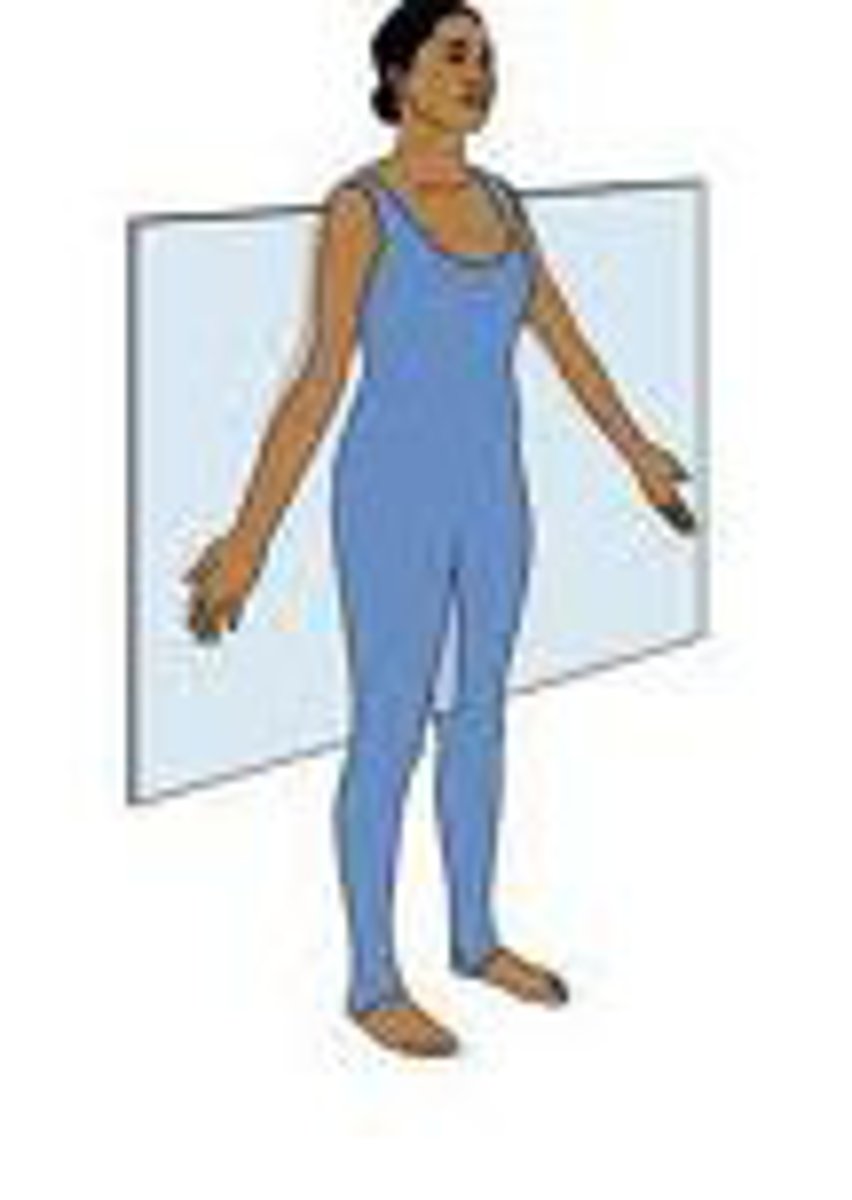Anatomy- Lecture 1: Basic and fundamental terminology
1/69
There's no tags or description
Looks like no tags are added yet.
Name | Mastery | Learn | Test | Matching | Spaced |
|---|
No study sessions yet.
70 Terms
Anatomic Position
Upright, feet parallel, eyes and palms forward.

Planes of reference
imaginary lines or actual dissecting cuts (sections) which may be used to "section" the body or an organ
Sagital Plane
divides the body into left and right halves

midsagittal plane
divides the body into equal right and left sides

Coronal Plane
divides into anterior and posterior portions

Transverse plane
divides body into superior and inferior portions

Anterior
Relative to front or back of body- In front of; toward the front surface. The stomach is anterior to the spinal cord.
Posterior
Relative to front or back of body- In back of; toward the back surface. The heart is posterior to the sternum.
Dorsal
Relative to front or back of body- Toward the back side of the human body. The spinal cord is on the dorsal side of the body.
Ventral
Relative to front or back of body- Toward the belly side of the human body. The umbilicus is on the ventral side of the body.
Superior
Relative to front or back of body- Closer to the head. The chest is superior to the pelvis.
Inferior
Relative to front or back of body- Closer to the feet. The stomach is inferior to the heart.
Cranial
Relative to front or back of body- At the head end. The shoulders are cranial to the feet.
Caudal
Relative to front or back of body- At the real of tail end. The abdomen is caudal to the head.
Rostral
Relative to front or back of body- Toward the nose or mouth. The frontal lobe is rostral to the occipital lobe.
Medial
Relative to front or back of body- Toward the midline of the body. The lungs are medial to the shoulders.
Lateral
Relative to front or back of body- Away from the midline of the body. The arms are lateral to the heart.
Ipsilateral
Relative to front or back of body- On the same side. The right arm is ipsilateral to the right leg.
Contralateral
Relative to front or back of body- On the opposite side. The right arm is contralateral to the left leg.
Deep
Relative to front or back of body- On the inside internal to another structure. The heart is deep to the rib cage.
Superficial
Relative to front or back of body- On the outside external to another structure. The skin is superficial to the biceps brachii muscle.
Proximal
Relative to point of attachment of the appendage- Closest to point of attachment to trunk. The elbow is proximal to the hand.
Distal
Relative to point of attachment of the appendage- Furthest from point of attachment to trunk. The wrist is distal to the elbow.
Cephalic Region
Head
Nasal
Nose
Oral
Mouth
Orbital
Eye
Mental
Chin
Frontal
Forehead
Occipital
Back of head
Cervical Region
Neck
Thoracic Region
thorax (chest)
Pectoral Region
Chest
Mammary Region
Breast
Sternal Region
Area between the left and right pectoral regions
Axillary Region
Armpit
Abdominal Region
inferior to diaphragm and superior to pelvic brim of the hip bones. (below chest)
Pelvic Region
inferior to the abdominal region, between the hip bones.
Upper extremity/appendage
arm
Deltoid Region
shoulder
Brachial Region
Arm-Between shoulder/elbow
Antecubital region or cubital
Elbow
Antebrachium region
forearm- between elbow and wrist
Carpal Region
Wrist
Hand
Manus
Palmar
Palm (front side) of hand (anterior)
Dorsum
Back of hand (posterior)
Lower extremity/appendage
Includes regions such as femoral, patellar, popliteal, crural, and foot.
Femoral region
Thigh- from hip to knee
Patellar region
Anterior (front) of knee
Popliteal region
posterior of knee
Crural region
leg- knee to ankle
Foot
pedal region
Plantar
Sole (bottom) of foot
Dorsum
top of foot
Body Cavities
enclosed spaces within the body
Cranial cavity (endocranium)
contains the brain
Vertebral Canal
opening formed by vertebral column
thoracic cavity (chest cavity)
bounded inferiorly by the diaphragm
2 pleural cavities
associated with the lungs
Mediastinum
between lungs
Pericardial cavity
associated with heart
abdominopelvic cavity
abdominal cavity and pelvic cavity
abdominal cavity
Contains stomach, intestines, spleen, and liver, and other organs
pelvic cavity
Contains urinary bladder, reproductive organs, and rectum
Serous membranes
composed of tissue and either cover or support organs or line the walls of some body cavities and secrete serous fluid.
parietal layer
lines the internal surface of the body wall
visceral layer
covers organ
serous cavity
space between membranes
The ___ region refers to the area around the armpit.
Axillary